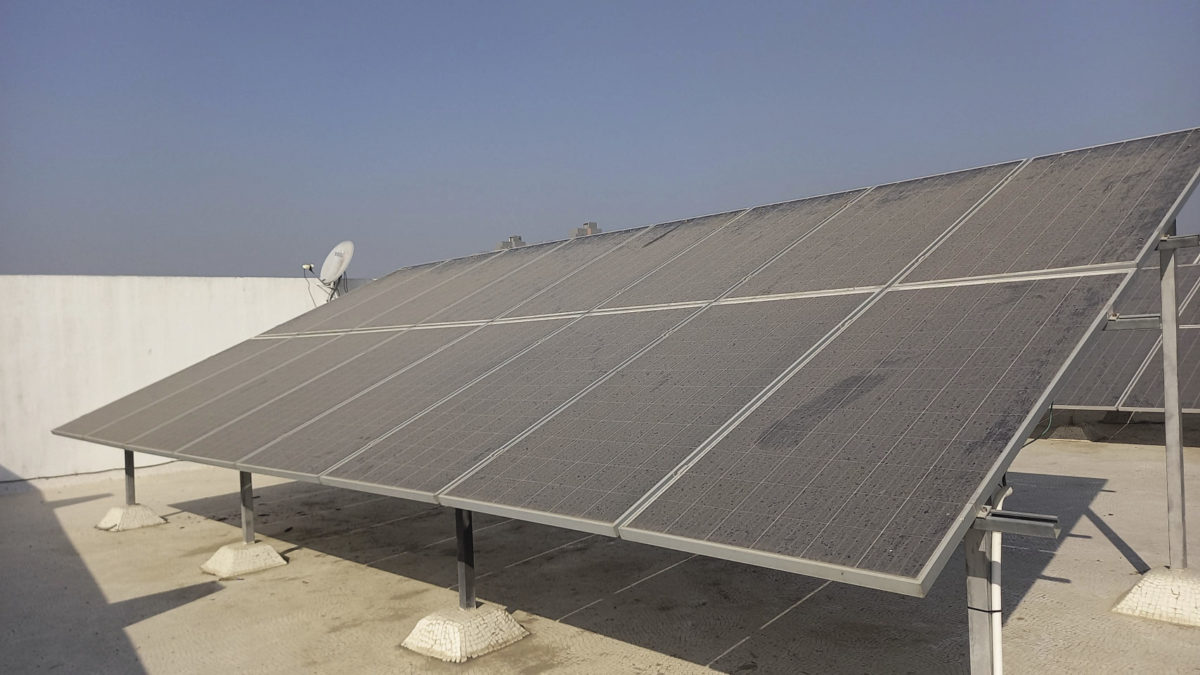
Scientists in South Africa have used computational fluid dynamics to investigate whether a dummy panel, placed in front of a working PV panel, can mitigate soiling. They have tested this setup with various inclination angles, heights, and distances and have found that the dummies accumulated up to 58% more dust than the PV panels.
Researchers from the University of South Africa have proposed a novel soiling mitigation approach for PV panels by placing non-working textured PV dummies in front of active PV modules.
They used computational fluid dynamics (CFD), which is a technique used to predict liquid, gas flows and to solve problems involving fluid flows, to explore the method’s capabilities, with changing tilt angles, heights, and distances.
“This concept has not been extensively explored in the existing literature,” the research’s corresponding author, Christopher Chintua Enweremadu, told pv magazine. “Unlike conventional methods that rely on active or resource-intensive cleaning technologies, this study employs 3D CFD to investigate how textured surfaces on dummy panels can alter airflow dynamics to capture dust particles and protect active PV surfaces.”
The tilt angle of the working solar panel was kept constant at 27°, and its height was set to one meter. The height of the dummy, however, was either 0.75 m, 1 m, or 1.25 m. The tilt angle was either 15°, 30°, or 45°. The distance between the two panels was 2 m, 2.5 m, or 3 m.
“Airflow analysis revealed an average wind speed of 3.31 m/s, predominantly from the East of North-East (66◦), with speeds ranging up to 5.7 m/s for 91% of the time,” the researchers explained. “A total of 378,600 particles were injected into the computational domain. The dust particle concentration was considered to be less than 12%.”
Through this experimental setup, the scientists found that the working PV panel received the least amount of soil, only 1,000 particles, when the distance between the panels was 2 m, the dummy height was 1 m, and the panel’s tilt was 30°. They also found that the largest amount – 128,000 particles – was found in the case of 2 m distance, height of 0.75 m, and a tilt of 45°. In those cases, the dummy had captured 93,000 and 6,000 particles, respectively.
The airflow simulations also demonstrated that the dummies effectively trap dust due to reduced velocities near their surface, with increased tilt angles contributing to lower dust deposition on the PV panels by reducing airflow velocity and enhancing turbulent kinetic energy.
“The research highlights that surface texture plays a crucial role in dust deposition, with the dummy panels accumulating 58% more dust than the PV panels,” the academics added. “Results indicated that dummy tilt angle has the highest correlation (0.64) with dust deposition, compared to lower correlations for distance (0.24) and height (0.29).”
The analysis also showed that surface impressions on the dummy resulted in 23% more dust deposition, compared to an untextured dummy. “This approach offers a low-maintenance, cost-effective, and aesthetically integrated solution, especially suitable for dusty, water-scarce environments,” concluded Enweremadu.
Their findings were presented in “Investigating the Impact of Surface Textured Solar Photovoltaic Dummies for Soiling Mitigation: A Computational Fluid Dynamics Study,” published in Results in Engineering.
This content is protected by copyright and may not be reused. If you want to cooperate with us and would like to reuse some of our content, please contact: editors@pv-magazine.com.
Source link


